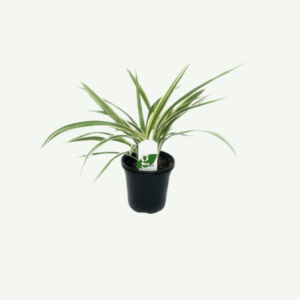Clerodendrum is a genus of flowering plants in the family Lamiaceae (formerly Verbenaceae). It comprises approximately 400 species of shrubs, vines, and small trees that are distributed across tropical and subtropical regions of Asia, Africa, and the Americas. Many species in the genus are known for their attractive flowers and ornamental foliage, making them popular choices for gardens and landscapes.
Landscape Use:
Clerodendrum plants are commonly used for ornamental purposes in gardens, parks, and landscapes, due to their beautiful flowers and attractive foliage.
Some species, such as Clerodendrum thomsoniae (Bleeding Heart Vine) and Clerodendrum trichotomum (Harlequin Glorybower), are popular choices for trellises, pergolas, and fences as they make stunning climbing vines.
The plants’ bright and colorful flowers attract pollinators like butterflies and bees, making them valuable additions to butterfly and pollinator gardens.
Overall, Clerodendrum is a diverse and attractive genus with many ornamental species. Their striking flowers, attractive foliage, and adaptability to different climates make them valued choices for adding beauty and interest to outdoor spaces. As with any plant, it’s essential to select the appropriate species for your specific climate and growing conditions to ensure successful cultivation.
Below is a general description of Clerodendrum plants:
Plant Characteristics:
Size: The size of Clerodendrum plants can vary widely depending on the species and growth form. Some species are small shrubs, while others are sprawling vines or medium-sized trees.
Leaves: The leaves of Clerodendrum are typically simple, opposite or whorled, and have serrated or lobed margins. The foliage can range in color from various shades of green to purple, depending on the species.
Flowers: Clerodendrum plants are known for their showy and often fragrant flowers. The inflorescences can take the form of cymes, panicles, or umbels. The flowers may be white, pink, red, purple, or blue, depending on the species. The colorful and attractive flowers make these plants popular choices for ornamental purposes.
Fruits: After flowering, Clerodendrum plants produce fruits that can be berries, capsules, or drupes, again depending on the species.
Cultural Requirements:
Sunlight: Clerodendrum plants generally prefer full to partial sunlight. They thrive in bright, indirect light but can tolerate some shade, especially in hot climates.
Temperature: Most species of Clerodendrum prefer warm and tropical climates, as they are sensitive to frost and cold temperatures. They typically grow best in regions where temperatures do not drop below freezing.
Soil: Clerodendrum plants prefer well-draining, fertile soil. They can tolerate a range of soil types, from sandy to loamy, as long as the soil is not waterlogged.
Watering: Regular watering is necessary to keep the soil consistently moist, especially during the growing season. However, be cautious not to overwater, as excessive moisture can lead to root rot.
Pruning: Pruning may be necessary to maintain the desired shape and size of Clerodendrum plants, especially for species with a sprawling growth habit or vines.






